THE WORLD RECORD FLIGHT
Warneford’s report of the 100 hour and 50 minute duration flight of February 1919
In February 1919 Warneford takes NS11 out for nearly four days in what was to be the longest endurance for flight yet. Here is his report…
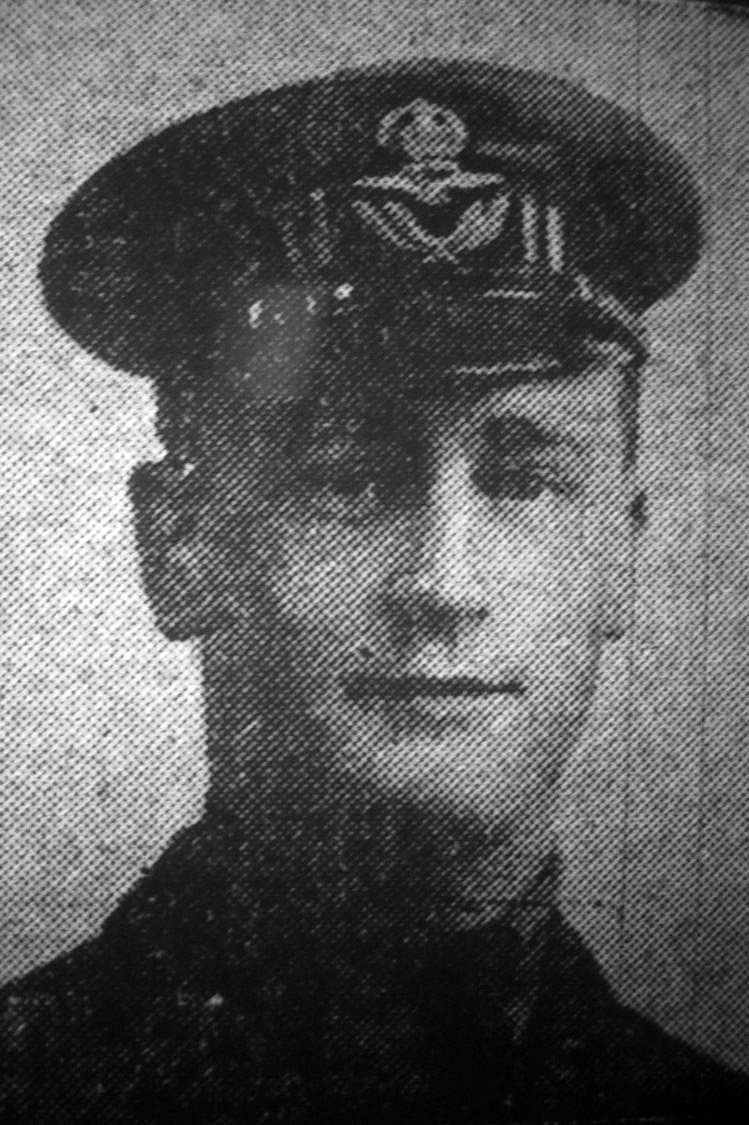
Captain W K Warneford. Image: The Crewe Guardian.
World record flight by H.M. Airship N.S.11, 9th-13th February 1919
From: Commanding Officer, HMA NS11, R.N. Airship Stn, Longside, AberdeenshireTo: The Commanding Officer, RN Airship Station, Longside, Aberdeenshire
14/2/19
Submitted, the following Log and Report of Duration Flight of H.M.A. N.S.11
9.2.19
1400 Left the ground.
1420 Peterhead. Course S.W. Stopped Starboard engine. 200 revs port. Air speed 19 knots. ground speed 10 knots.
1500 Cruden Bay. Air speed 20 knots. Ground speed 10 knots.
1530 Ythan River.
1545 Started starboard. Stepped port to alter cooling surface.
1620 Girdleness.
1700 Wind WSW 10/12 mph. Air speed 19 knots. ground speed 9 knots.
1740 Increased to 900 revs. Air speed 20 knots.
2015 Signal from Base “Be off Cruden Bay at day light tomorrow”. Position now is Tod Head. Wind SW 21 knots. Bad bumps. Altered course N.
2030 Aberdeen. Proceeded North. Weather much better. Port engine running. Starboard engine changing plugs.
2215 Signal to Base “Wind SW 20 knots. Tod Head. Conditions between Stonehaven and Peterhead perfect. Position Buchan Ness”.
2230 Buchan Ness. Wind 10mph. N’E.
2300 Reduced to 750 revs/ port. Position Peterhead. Proceeding North to Rattary. Air speed 18 knots. Ground speed 8 knots. Wind North 10 knots.
2345 Rattray Head. Wind at 500 feet NW 15 mph. A/c SW.
2355 Captain MacColl took over.
.
10.2.19
0150 Girdleness bearing NW 3 miles. Wind indefinate. A/c NNE.
0730 Signal to base “Off Cruden Bay. Request weather report”
1115 Signal to base “Am proceeding to Tod Head to see if weather has improved”.
1215 Signal to East Fortune “Request weather report and forecast”.
1235 Tod Head.
Signal to base “Wind NW light. request permission to proceed as far as East Fortune”.
1430 East Fortune.
1535 Steering to St. Abbs.
1540 Barnes Ness. Petrol consumption works out at just under 7 gallons per hour.
1640 Magneto coupling stripped in the Starboard engine. Turned back to East Fortune to pick up new spare.
1815 Decided that we were too heavy to attempt pick up spare to-night, so am returning 1015 tomorrow.
1900 Made signal to Longside telling them of our trouble. Proceeding South.
2100 Signal from base “return North”. Position Farne Islands.
2115 Altered course N. in accordance with instructions from Longside.
2230 Captain McColl took over.
2300 St. Abbs.
2355 Bass Rock. A/c for May Island.
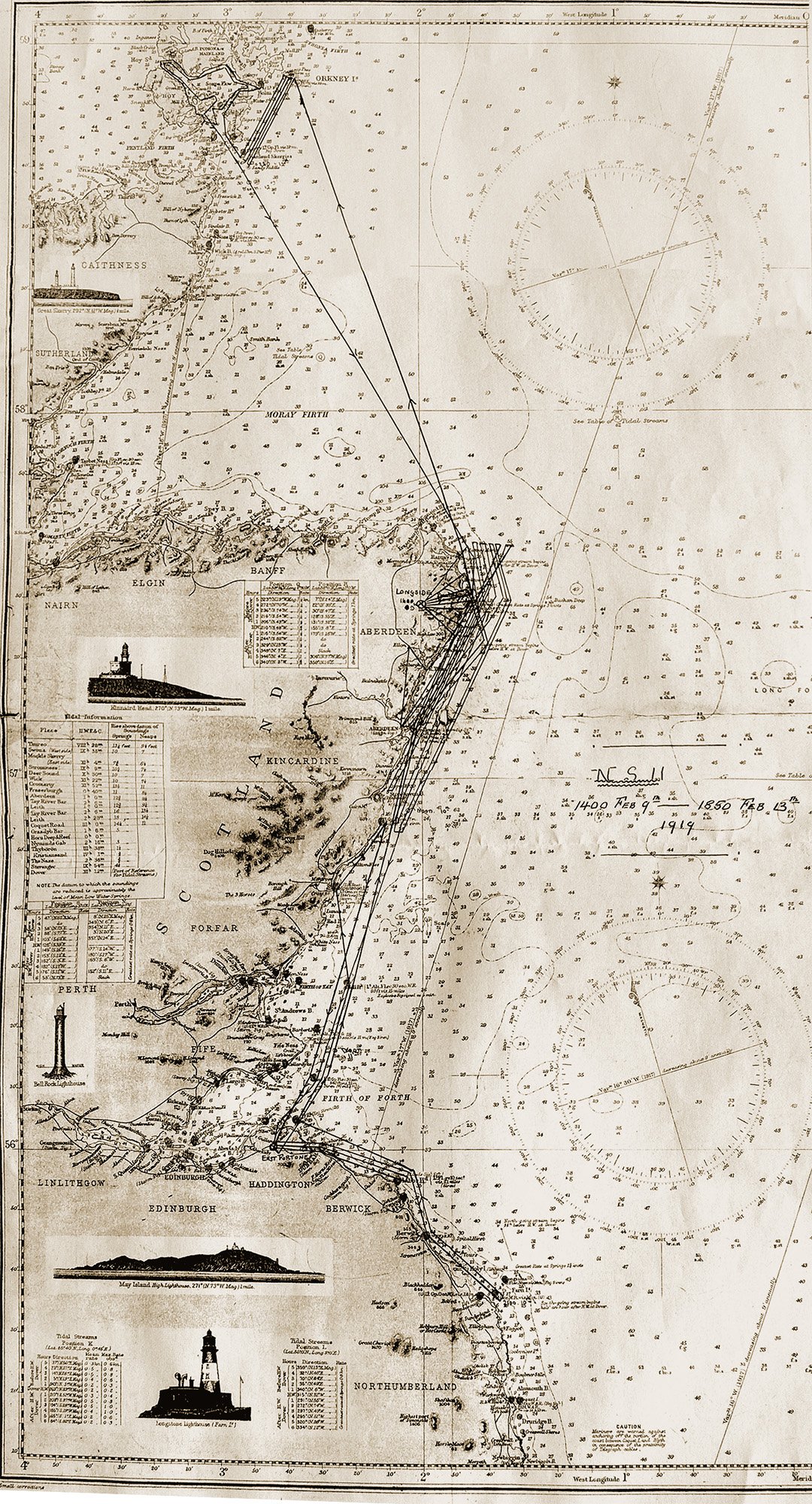
Chart of the world record endurance flight from the official log of N.S.11 Source: AIR2/16 – Public Records Office, Kew
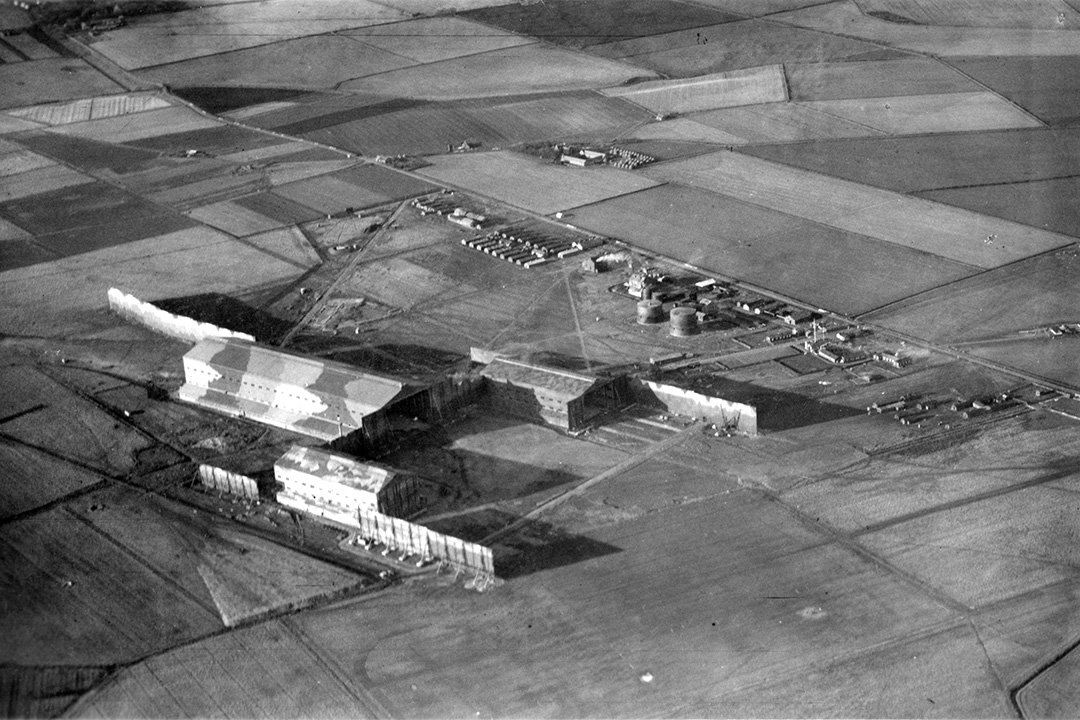
Longside airship station Image: FAA Museum
11.2.19
0030 May Island.
0230 Passed Bell Rock.
0300 Steering NNE for Scurdy Ness Light. Reduced speed to 18 knots. 800 revs.
0720 Passed Scurdy Ness Light.
0900 From base “What are you doing about your Magneto drive”
Reply “Picking up new one at East Fortune. Shall not land.”
1030 Picking up water and Magneto parts at East Fortune.
1055 Crossed coast at Seacliff. Set course for Scurdy Ness.
1115 Passed two paddle mine sweepers working in South May Island Channel and one trawler firing at drifting mine.
1145 Signal to Longside “Have picked up parts from East Fortune and am effecting repairs”.
1200 From Longside “Wind over East Coasts of England and Scotland remaining calm and light. Forecast 12 hours becoming overcast (Sky had been overcast since 1900 previous day making ship very heavy owing to the cooling.
1245 North Carr Light Vessel. Wind NE 12 knots; cloudy; overcast.
1500 To base “Both engines now O.K. position Scurdy Ness proceeding North.
1515 From base “How much petrol have you used and how much have you left.” Reply “Used 350, left 640.”
1604 50 hours in flight. Consumption of petrol for 50 hrs just under 7 gallons per hour.
1940 Over Aberdeen.
2200 Over Base.
2300 Kinnaird Head.
12.2.19
0005 Dropped Holmes Flare. Wind indefinite. Set course for Pentland Skerries.
0220 Pentland Skerries. A/c N.E. for Copinsay.
0310 Copinsay.
0800 Scarpa.
0830 Photographing German Fleet.
0945 Exchanging Signal with Squadron Flag Ship HMS Barham. Wind was now S.E. 20 knots. Considered it advisable from the look of the weather to return South.
1145 Pentland Skerries. Course 170. Ground speed 20 knots. Air speed 28 knots.
1200 Trying to pick up water in a petrol tin. It was not a success
1230 Wind about 20 knots S’W.
1245 Signal from base “Return South without delay. Wind increasing from Southward : increased to 27 knots (1100 revs.)
1315 From base “Request position, fuel consumed, fuel remaining at 1400.”
1400 To base “Position 97 MCP, 500 gallons consumed, 480 remaining”.
1530 Wind if anything increasing slightly. Started up Starboard engine. Increased speed to 32 knots.
1710 Picked up Kinnairds light.
1815 From Base “Surface wind SSW 8 mph. Overcast; misty; Barometer nearly steady. Forecast – Surface wind mainly South under 2C. Cloudy, misty.
1915 Approaching coast between Rattray and Kinnaird. Port engine 900 revs.
1930 Wind at 300 feet 18 knots S’W.
2015 Wind 20 knots South.
2145 Rattray Head.
2200 From Base “Request you will have 16 gallons of drinking water in petrol tins at south block tomorrow. I will take up with a line”.
2240 Signal from Rear Admiral Peterhead. “Well done – I hope you will be able to stick it”.
2324 Over Peterhead. Signal to R.A. by flash lamp “Submitted many thanks for your signal”.
2345 Proceeding to Aberdeen.
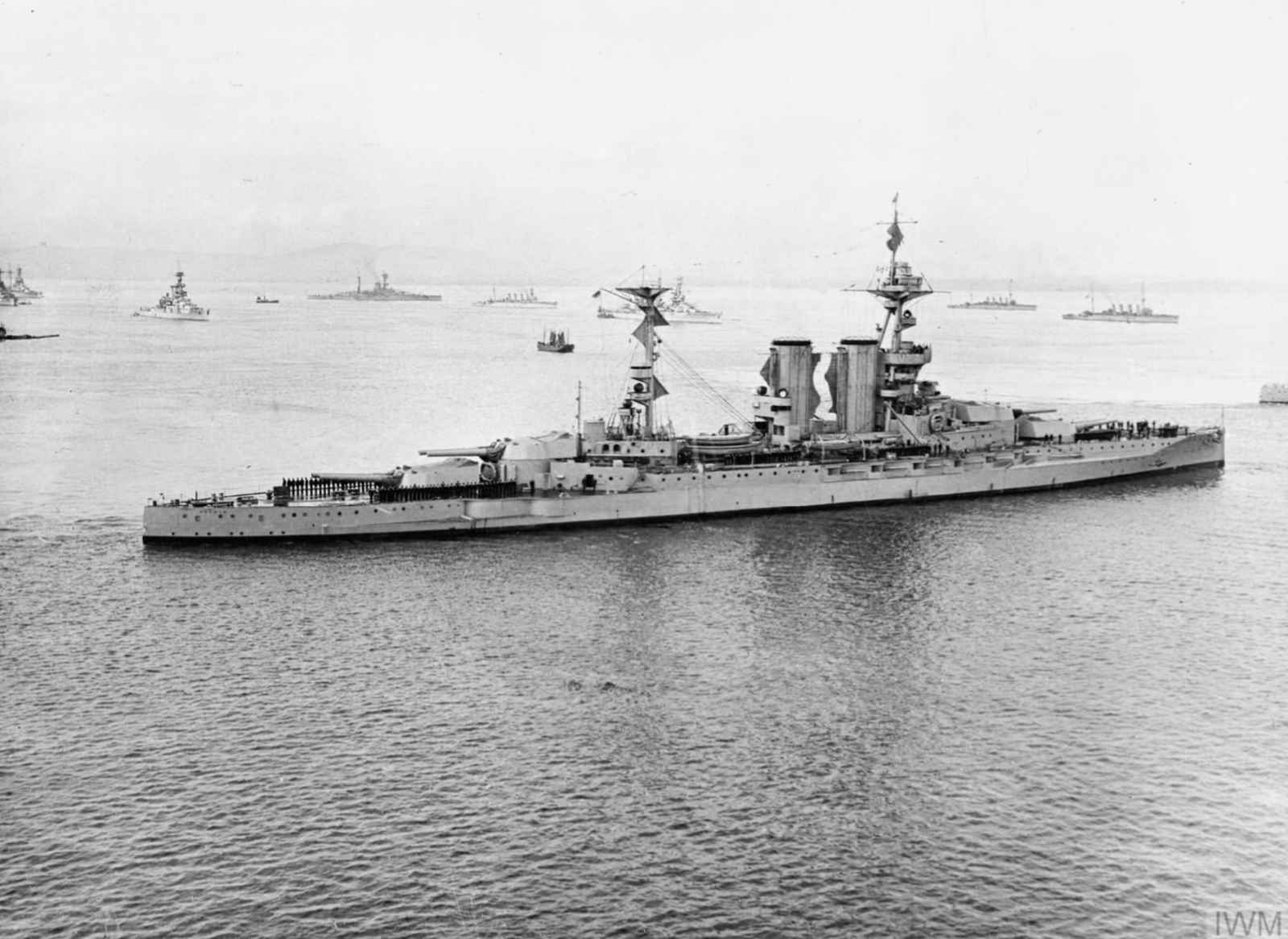
HMS Barham at Scapa Flow. Image: IWM – SP 1661
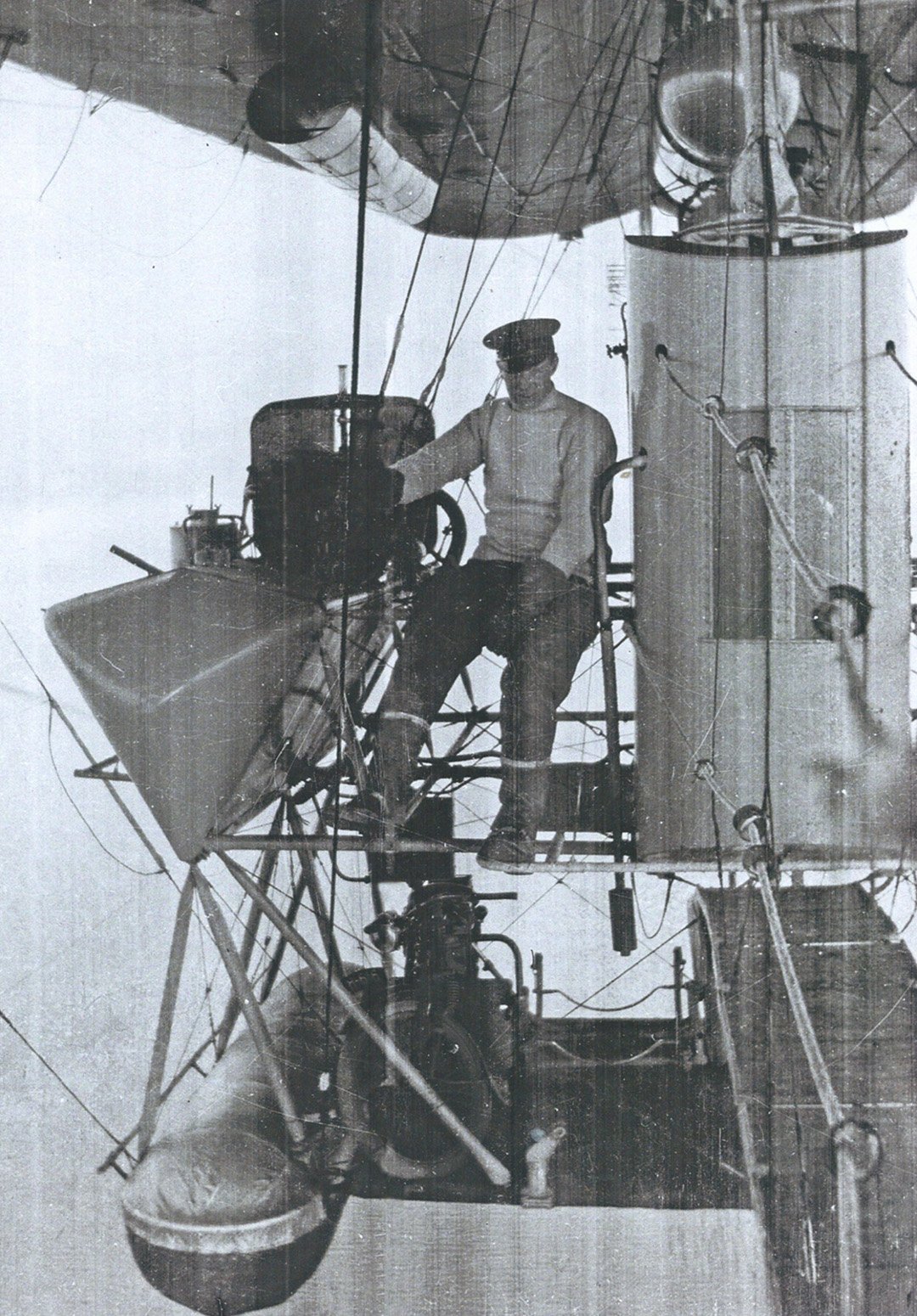
Starboard engine of N.S.11 with motorcycle stowed underneath (we are assuming Warneford’s). Image: Brian Carr, The Pennoyer Centre, Pulham St Marys.
13.2.19
0020 Signal from base “Keep south of Longside during the night”.
0130 Temperature in the car 32. Outside 30. Informed Engineer.
1000 Attempting to pick up water. This was a failure owing to there being insufficient wind to slow the ship up.
1200 To base “Request information if wind increased over 10 mph. I will make another attempt at picking up.
1240 From Base “Indicate position. Keep South of Peterhead, wind will probably be sufficient for you to pick up water between 1400 & 1500. Wind not likely to increase over 12 miles”.
1245 Troup Head. Ballasted ship up accurate over sea for picking up water. Directly sun was hidden by cloud, she became extremely heavy a matter of some 600 lbs.
1430 Managed to pick up one tin of water at the Station, but ship was so heavy that it was not worth while running the risk of picking up more.
1730 Dropping petrol
1800)
1850 Landed.
DURATION OF FLIGHT – 100 HOURS, 50 MINUTES
CREW
Captain Capt. W. K. F. G. Warneford
2nd Officer Capt. A. J. H. MacColl
3rd Officer Second Lieut. J. Gibson
1st Coxwain Flight Sergeant B. C. Cunningham AFM
2nd Coxwain Corporal R. H. Stevens (unpaid)
1st ERA Sergeant Mechanic J. Wrenn
2nd ERA Sergeant Mechanic J. W. Sansom
1st W/T Cpl. Mech D.T. Williams
2nd W/T AC1 R. R. Heath
The crew were in no way fatigued, except for the 1st Engineer who had to perform a great deal of heavy work, such as starting up the engines, etc. When he had started up one engine single handed, he was so fatigued that he collapsed and fell off the rail, but fortunately, he was caught by a piece of 5cwt wire between the rolling guys and recovered himself.
(Sgd) W.K. Warneford
Captain, R.A.F.
Commanding Officer H.M.A. N.S.11.
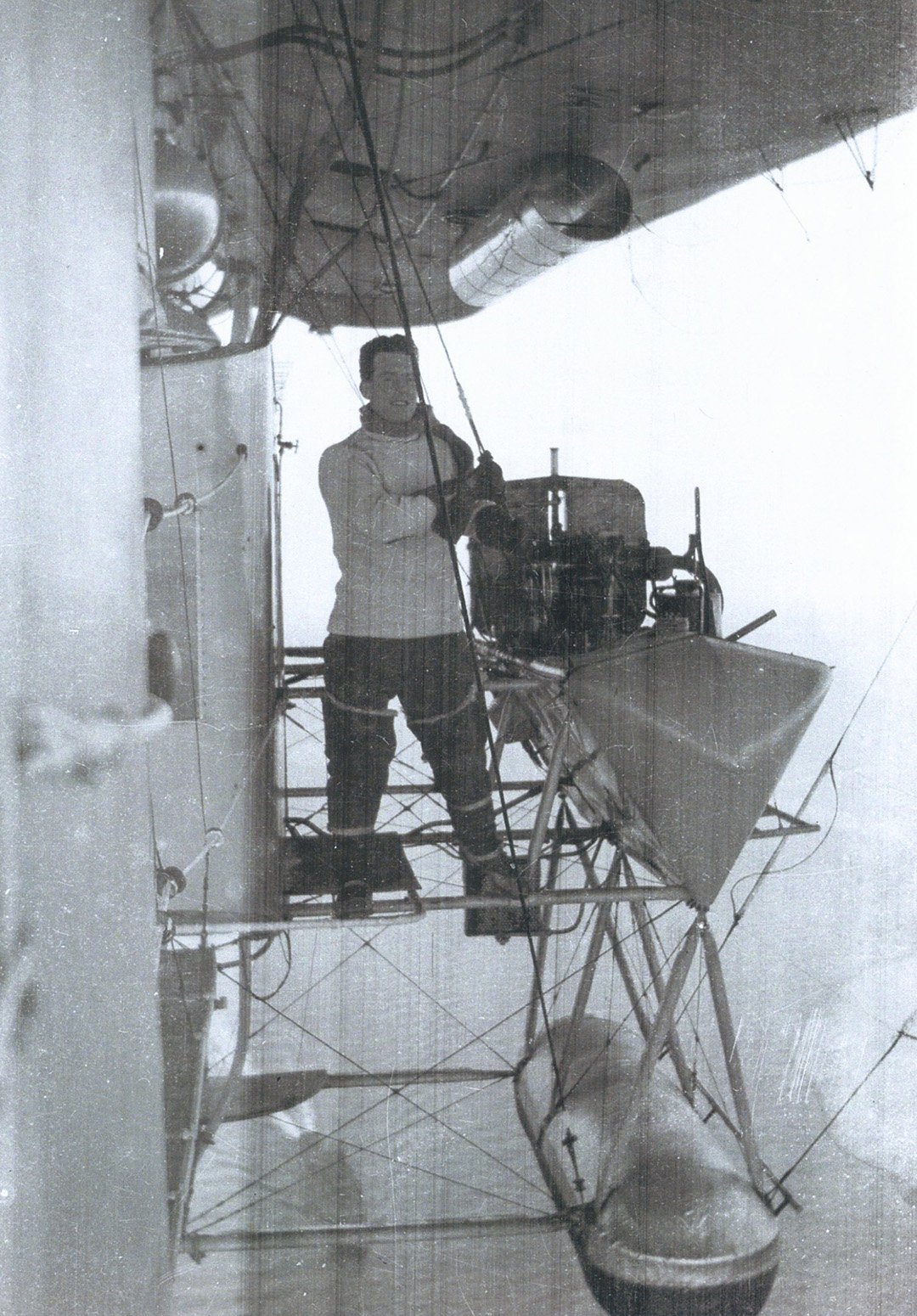
Port engine of N.S.11. Image: Brian Carr, The Pennoyer Centre, Pulham St Marys.
SOURCE: AIR2/16 – Public Records Office, Kew